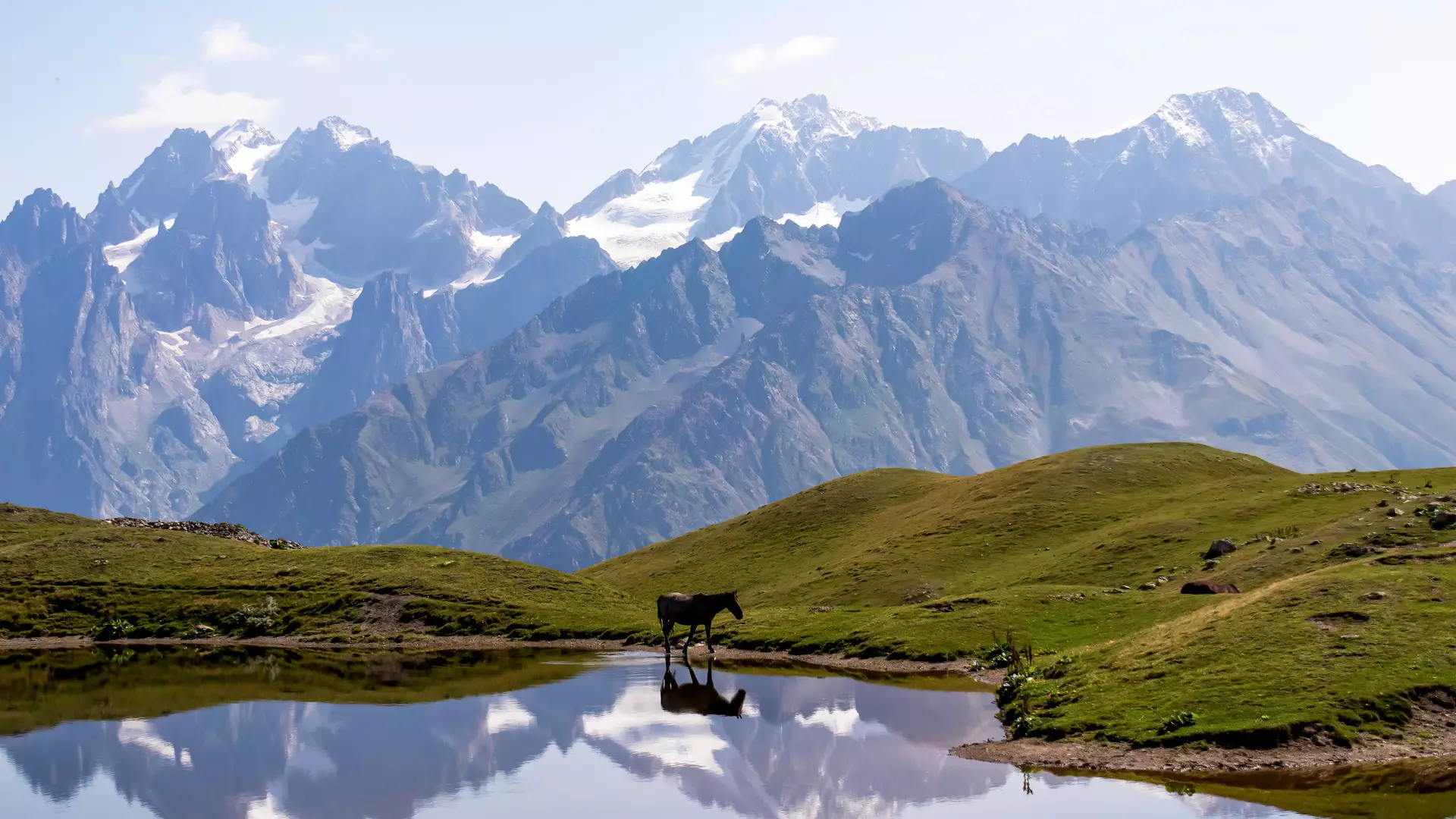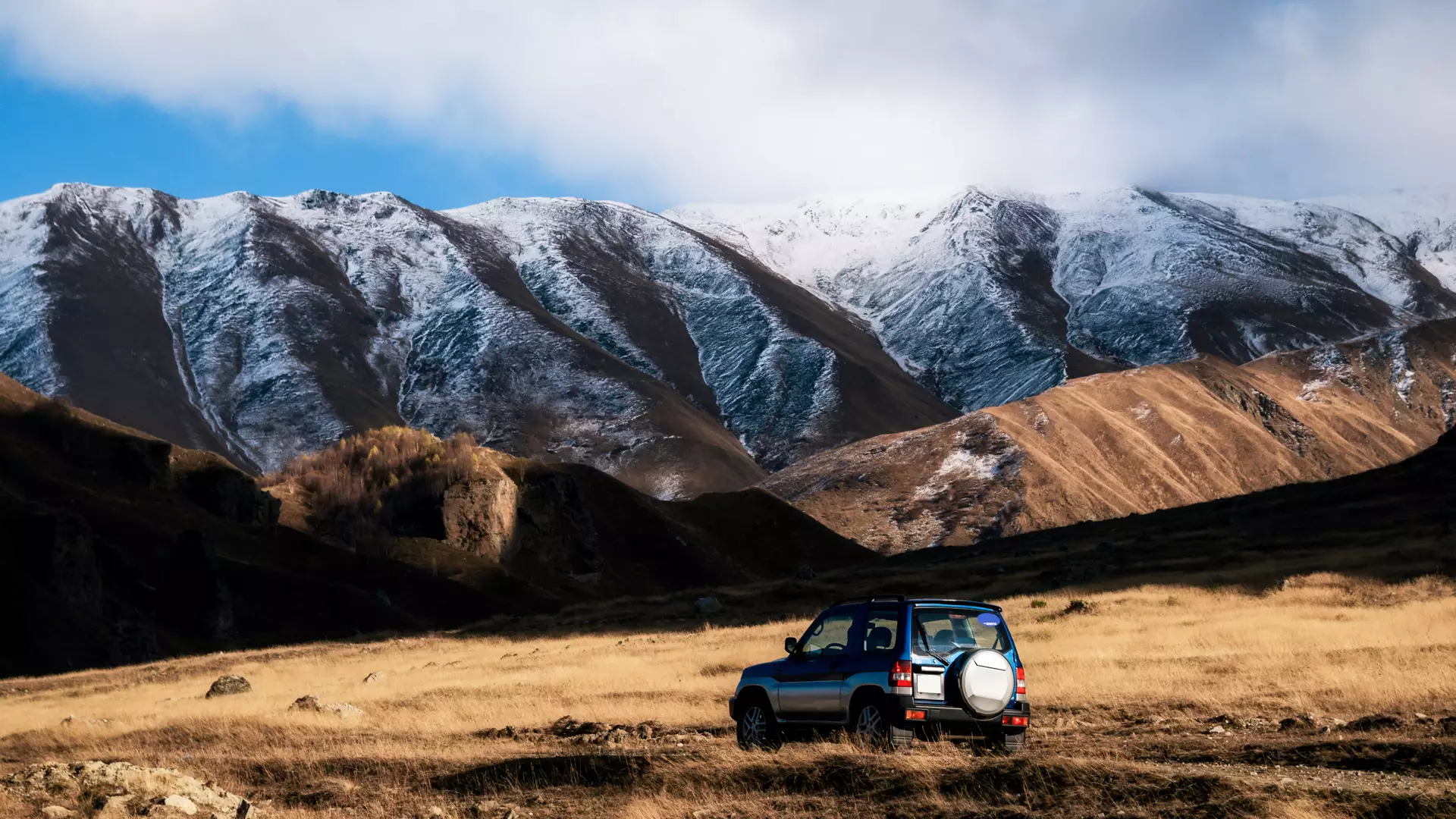Caucasus
Geography
The Caucasus consists of two large independent mountain systems, the Greater Caucasus and the Lesser Caucasus. The region is located between the Black, Azov and Caspian Seas, and is bordered by the Kuma–Manych Depression to the north, Iran and Turkey to the south, the Kuban river to the west, and the Absheron Peninsula to the east.
Stretching over 440000 square kilometers, the Caucasus is divided into two parts: the North Caucasus, to the north of the Greater Caucasus and today is part of the Russian Federation, and the South Caucasus, where four countries are represented - Georgia, Armenia, Azerbaijan and the eastern part of Turkey.
Terrain and climate in the Caucasus

In Georgia as well as the entire Caucasus, tall mountains and glaciers cover more than half of the region, therefore, the climatic conditions are radically different. You will experience the worst winters high in the mountains, and you can walk through the semi-desert in the eastern region. There is a subtropical climate and lush vegetation along the seaside regions.
The lowest point in the Caucasus is 28 meters below sea level, or minus nine floors in terms of modern structures. Elbrus is the highest peak at 5,642 meters above sea level.
21 physical-geographic and 11 climatic regions are represented in the Caucasus, which completely differ from each other, and have a diversity of flora and fauna.
Caucasian people and Caucasian languages

As one of the world's most notable multi-ethnic regions, the Caucasus is truly remarkable. The native Caucasians and the Georgians among them have forged a close bond within the region's many ethnic groups, some of which have been living in the Caucasus since the antiquity period and are still present today.
In the Caucasus, people of many different cultures coexist on relatively small chunks of land. These people hail from all over the world and some have been there for millennia. Approximately fifty distinct ethnic groups call the Caucasus home today, each with its history, language, and culture.
The almost 50 languages spoken in the Caucasus are divided into five different language families: the Kartvelian, the Northeast Caucasian, the Northwest Caucasian, the Indo-European and the Turkic languages. The Kartvelian (South Caucasian or Iberian) language family comprises Georgian, Megrelian, Laz (or Chan), and Svan. The speakers of these languages constitute the Georgian nation.
Jews in the Caucasus
As one of the world's oldest and most cultural ethnic groups, Jews are an important topic to discuss in the Caucasus. The Jewish community in Georgia has been around for 26 centuries. Assyria's conquest of Israel in 722 BCE and Babylon's destruction of Judea in 586 BC exiled Jewish people from their homeland. Jewish people eventually settled in many different countries, including Georgia, making their home and establishing a thriving community. Jews in Georgia, like Jews all over the world, assimilated into the local culture by learning the language and customs, but they still maintained their religion and several other traditions. Their ties to Jerusalem have not weakened despite the many hardships.
Great Caucasus - a difficult passage of cultural-economic relations between Caucasians
The peaks in the central part of the Greater Caucasus are covered with snow (Elbrus at 5,662 meters, Shkhara at 5,203 meters, Dykh-Tau at 5,198 meters, Koshtan-Tau at 5,144 meters, Janga at 5,059 meters, and Kazbegi at 5,054 meters). Although these mountains may seem insurmountable at first glance, the indigenous people of the area have discovered numerous routes over the centuries. Since ancient times, these passes have been the only means of communication between the various ethnic groups residing in the Caucasus.
Dariali Gorge and Derbent were two of the most active channels of communication. During the summer months, they took alternative routes (most importantly, the passage from Dvaleti into the North Caucasus). North and South Caucasians have maintained close cultural ties over the centuries thanks to these passages. There have always been cultural, ethnic, and economic ties between the peoples of the Northern and Southern Caucasus since territories of modern-day Karabakh were traditionally used as pastures by people from the Northern Caucasus.
The Caucasus region has been the subject of numerous books, from ancient Greek chroniclers to contemporary anthropologists. Everything that has shaped this part of the world over many centuries and has stood the test of time, including the architecture, reliefs, cultural life and various rituals described in these works can all be seen and experienced in the modern-day Caucasus.
Cookie Policy
